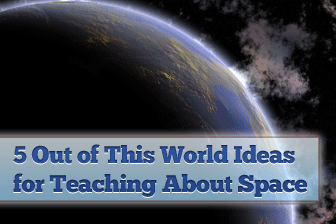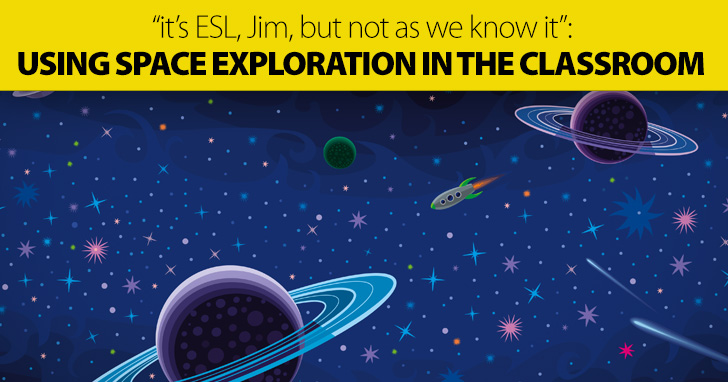5 Out of This World Ideas for Teaching About Space


I believe it’s important that our students find out about the history of space exploration, both manned and unmanned, and I’m convinced that most students thoroughly enjoy doing so. However, far too often in recent years, I’ve heard students reject the idea of exploration as too expensive or dangerous, as irrelevant to the lives of people on Earth, and still occasionally (though, thankfully, less often) as a bizarre form of hoax. For me, these are dangerous trends; they indicate a kind of small, Earth-bound thinking quite out of keeping with the sheer enormity and beauty of the Universe and, I believe, poisonous to a true understanding of who and where we are. Our role as teachers, as I see it, is to roll back this skepticism and engage our students with the fascinating majesty of the heavens, as well as the history of our understanding of them and, ultimately, our students’ place within them.

As with most things, your students will be able to tell you a lot of the basics of space flight. This is a good chance to practice numbers and the measurement of speed. You could check:
Push on from here to ask if the students can name any spacecraft; include fictional examples such as the USS Enterprise, but make sure they’ve heard of Voyager, Pioneer 10 and 11, and New Horizons, all of which are leaving the system, in different directions.
Your students will know that people have traveled in space, and are probably aware that we have an International Space Station. Quiz them briefly on the ISS (How many people can live on board? How do they travel there? Which nations are represented?) before slightly blowing their minds by telling them the ISS can be seen from Earth.
Then, practice the perfect tense forms by figuring out the order in which space events happened, e.g. Had astronauts already walked on the moon before we built the ISS? (Yes, in 1969 and 2000 respectively) Is it true that Voyager had taken close-up pictures of Jupiter before the Space Shuttle was first flown? (Yes, in 1979 and 1981 respectively.)
There are huge opportunities for Internet and book research. Ask your students to find some space records, e.g.:
More detailed research, perhaps leading to short presentations, could include finding out the causes of the Challenger and Columbia accidents, or the recent test accident involving Virgin Galactic’s SpaceShip 2, as well as the earlier tragedies of Soyuz 1 and Soyuz 11.
More positive topics could include listing the successes of the Apollo moon landings, or the fantastic data sent back by Viking, Cassini, Pioneer, Voyager, or more recently, Dawn and the European Rosetta probe.
Finally, are there companies offering trips into space? How much might they cost, and what might a ‘space tourist’ experience?
The classic ‘space debates’ are:
Terrific documentary movies on spaceflight and space science are numerous. I can’t recommend highly enough the two versions of Cosmos, both the original by visionary scientist Carl Sagan, and the much-updated series with Neil DeGrasse Tyson.
The BBC has produced a highly watchable two-part drama, Voyage to the Planets, which tells the story of a fictionalized multi-planet trip by an international team of astronauts. Also good fun is James May On The Moon, featuring the popular Top Gear figure as he interviews Apollo astronauts and then sees the edge of space from high altitude.
I’m happy to offer you this quiz . The answers are as follows:
Your students can either guess the answers, or you could give them time to research each one on the Internet, perhaps in small teams. This should give them some good background, might explode some myths, and should encourage them to think about space exploration not just as something from science fiction or video games, but as real work being done by real, often truly intrepid people.